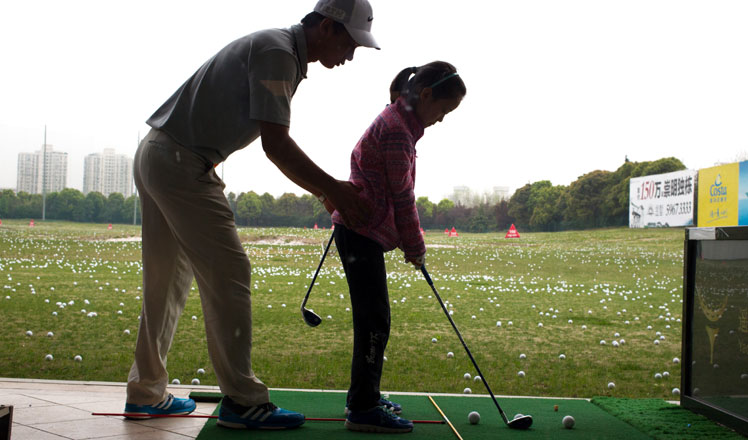Breast cancer deaths fall, but cases rising
Updated: 2016-05-09 08:27
By Shan Juan(China Daily)
|
||||||||
|
A group of women participate in Run for Her, a breast cancer awareness event, at the Juyongguan section of the Great Wall in suburban Beijing on May 6, 2016. [Photo by Zou Hong/China Daily] |
China could have 2.5 million people with the disease in 5 years
The breast cancer mortality rate has started to fall in China, thanks to improved early detection and treatment, according to a leading specialist - but the disease is still on the rise.
Jiang Zefei, a breast cancer expert with the 307 Hospital of the People's Liberation Army, made the remarks at an awareness-raising event, Run for Her, at the Juyongguan section of the Great Wall on Friday.
More than 300 volunteers, including breast cancer survivors, participated in the activity organized by the Chinese Anti-Cancer Association and Shanghai Roche Pharmaceuticals that was aimed at rallying more support for cancer patients.
Statistics from the nation's cancer registry compiled by the National Health and Family Planning Commission showed the incidence of breast cancer increased at an average annual rate of 3 percent in recent years to almost 43 people in every 100,000.
Last year, there were 272,000 newly detected cases, according to the cancer registry. If the trend continues, China can expect to have 2.5 million breast cancer patients by 2021, with the incidence rate increasing to 100 people in every 100,000.
"While the incidence rate of breast cancer has been shrinking in Western countries - the traditional high-burden countries - it is on the rise in China and has become the top cancer type among women here," Jiang said.
In Shanghai where the capacity to diagnose and treat is above the national average, the incidence rate for breast cancer is now three times what it was in 1972, according to Shao Zhimin, a professor at Fudan University Shanghai Cancer Center.
He said the reasons for the increase in cases include changes in lifestyles, living conditions, diets and the urbanization of cities, as well as marriages and childbearing later in life.
On the positive side, Jiang said early detection and enhanced treatment had meant more people were now surviving the disease.
Among patients in whom the cancer was caught early on, the five-year survival rate could be as high as 90 percent in large cities, he said.
"Early detection and treatment is the key," he said.
He suggested women aged 25 and older have regular breast cancer screenings.
The specific type of screening varies according to age: Women older than 40 should have a mammogram, a widely available diagnostic and screening tool that uses low-energy X-rays to examine the breasts.
He said these should be carried out once a year. For younger women, an annual B-scan is better. A nuclear magnetic resonance test could be carried out if initial tests find something is potentially wrong, he added.
In China, the average age at which women are diagnosed with breast cancer is between 45 and 55, which is younger than in the West, according to the cancer registry.
In addition, 5-10 percent of patients have a family history of breast cancer, Jiang said. Women who have two blood relatives with breast cancer - such as a mother or aunt - are at greater risk.
- Society: Buses offer breast-feeding space
- Compound in broccoli slows cancer cell growth in breast cancer: new study
- US panel recommends biennial breast cancer screening starting at age 50
- Breast milk banks save infants
- New subway stations to include room for breast-feeding moms, babies
- Micro blog shuts down after it criticizes breast-feeding mom
- Breast cancer deaths fall, but cases rising
- Doctor's death prompts calls for protection of medical staff
- Survivors found as dozens buried in landslide
- 60% of career women say no to second child, report finds
- Captain held after vessels collide at sea
- Human rights practices reviewed 30 years on from UN declaration

 Canada getting on top of Alberta wildfire, Fort McMurray off limits
Canada getting on top of Alberta wildfire, Fort McMurray off limits
 Young golfers enjoy the rub of the green
Young golfers enjoy the rub of the green
 71st anniversary of victory over Nazi Germany marked
71st anniversary of victory over Nazi Germany marked
 Post-90s girl organizes others’ messy wardrobes
Post-90s girl organizes others’ messy wardrobes
 Landslide hit hydropower station in SE China
Landslide hit hydropower station in SE China
 World's first rose museum to open in Beijing
World's first rose museum to open in Beijing
 Teapot craftsman makes innovation, passes down techniques
Teapot craftsman makes innovation, passes down techniques
 Raging wildfire spreads to more areas in west Canada
Raging wildfire spreads to more areas in west Canada
Most Viewed
Editor's Picks

|

|

|

|

|

|
Today's Top News
Liang avoids jail in shooting death
China's finance minister addresses ratings downgrade
Duke alumni visit Chinese Embassy
Marriott unlikely to top Anbang offer for Starwood: Observers
Chinese biopharma debuts on Nasdaq
What ends Jeb Bush's White House hopes
Investigation for Nicolas's campaign
Will US-ASEAN meeting be good for region?
US Weekly

|

|









